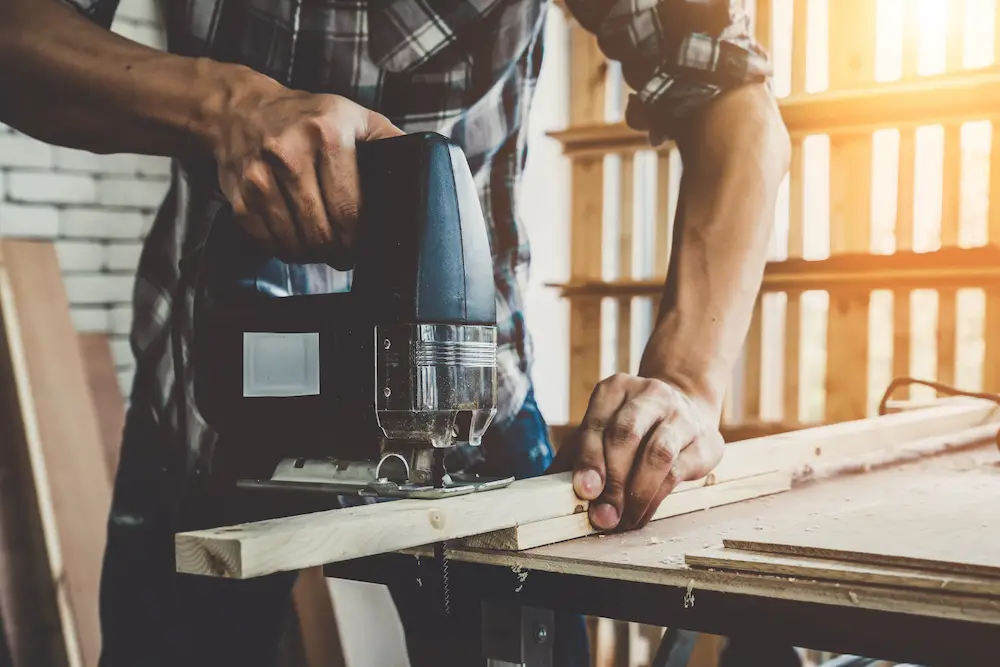To make sure that your boat lasts for many years of use, you need to make sure that you use the best wood for boats.
Every boat enthusiast has their preferences for boat building materials, but there’s no arguing that some are simply better than others.
Top resources, such as MyBoatPlans, can help you to find the right wood types for different areas of your watercraft.
Considerations to Keep in Mind
There’s more to choosing wood than settling with certain varieties that are recommended by the professionals.
You’ll first need to make sure that certain wood types are available in your area. Otherwise, you’ll be faced with several excessive shipping and handling costs.
Availability
Some types of wood might need to be imported from different states or countries, tripling your costs.
You might also find that certain woods can work just as well as your top choice and are available to be sourced locally.
It’s a great idea to make a list of your top varieties and then rank them based on how easy they are to find.
Size and Cost
Another essential factor to consider is whether your desired wood comes in the right size.
Certain woods can only be purchased in individual widths and lengths, making them ideal for a specific placement.
For example, the wood used in your cabin might not be large enough for the ribs.
If you need wood cut to specific sizes, you can guarantee it will also increase your coat.
Often, it can be better to opt for certain types of wood specifically meant for trim, flooring, ribbing, and more.
Ease of Use
Once you get more experience with boat building, you can be a little more flexible with the wood you choose.
Some materials might be more challenging to work with than others in terms of holding nails, bending, or strength.
You might even find that you’ll need special equipment for certain varieties than others, which can be challenging to find for beginners.
Best Woods for Boat Building
There are more than enough wood options out there that are perfect for boat building. Among the most used are the following:
1. Cedar
This wood is one of the easiest to source in North America, especially in the United States.
Another advantage of cedar is that there are several different kinds to consider, which are all easy to work with.
You can find them in longer lengths, with knots, or in grain-free designs. You can even find different cedar types with predrilled holes so that you won’t have to worry about splitting.
Because fracturing is one of the main disadvantages to cedar, it’s something to take into consideration.
Western Red Cedar
This cedar type has lesser tensile strength than the other types, which means it’s excellent for bending.
You wouldn’t typically consider using it for planking, but it can be phenomenal for small boats combined with fiberglass.
Another benefit is that western red cedar is often used for decking, so you can easily find it in your local hardware store.
Alaskan Yellow Cedar
There’s no doubt that Alaskan yellow cedar is one of the hardest types of cedar.
It gets its name from its distinctive yellow color, and fortunately, it is also available at long lengths.
White Cedar
Northern and southern white cedar are harvested from the south and southeastern parts of Canada.
Both the northern and southern varieties are very aromatic and are relatively rot-resistant.
They’re also close-grained and relatively easy to work, which makes them convenient for beginners.
Port Orford Cedar
Port Orford cedar is one of the more popular materials for planking, but it’s also used for interior finishes.
It’s easy to work, and you can find it in longer lengths than the other types of cedar on this list.
2. Ash
If you’re in the market for a wood type that will take quite a beating from tools, ash is one of the best to choose.
This material works well with sanding and sharp tools. Not to mention, it bends easily when exposed to steam.
Unfortunately, it’s not rot-resistant, so it’s not your best option for planking. Instead, it is great for frames, handles, poles, boat hooks, and more.
3. Cypress
You can typically get your hands on cypress for the lowest cost if you live near the Gulf coast of the United States.
Cypress is a phenomenal wood for planking because its natural resin is fully resistant to dry rot.
Because these trees grow in the swamps along the Gulf, you can guarantee optimal water resilience.
Cypress is relatively lightweight with moderate strength, but it does tend to absorb a lot of water.
When your boat is submerged, it will be much more massive, so you won’t want to consider it for land transport.
For example, if you’re building a portage craft, cypress is one of the top materials to avoid using.
4. Elm
When deciding on elm for your boat, you will undoubtedly want to focus primarily on rock elm.
It’s one of the most prestigious woods due to its heaviness, strength, and resilience, which also makes it difficult to source.
Even if you live in the Northcentral United States, where it’s familiar, rock elm is challenging to get your hands on.
Still, no one can deny that rock elm is a phenomenal choice for boats because it offers optimal shock resistance, making it ideal for all water conditions.
You’ll also find that it creates an incredibly sturdy frame for the bottom of boats, while in England, they use it for planking.
If you can find rock elm for a reasonable price, it is surely one of the better types of wood to consider buying.

5. Oak
Out of all the other types of wood on this list, oak is the most prevalent in shipbuilding.
Because it is quite affordable and easy to source, it has become the go-to material for beginners and veterans.
Similar to cedar, there are a couple of different types of oak to consider.
White Oak
Compared to red, white oak is far more popular because it’s relatively easy to work with and offers plenty of strength.
Many shipbuilders use it for longitudinal timbering because it doesn’t shrink or swell when it gets wet.
Also, it’s known to hold fastenings particularly well, so you won’t have to worry about taking extra steps for durability.
Regardless of how you purchase white oak, it is highly resistant to dry rot, making it easy to store.
Red Oak
There are a few similar traits between white and red oak, primarily its ability to bend with steam.
However, it’s the less popular of the two because it’s much softer and is more likely to absorb water.
You’ll have to make sure you pay special attention to painting and finishing the wood to protect it from water.
6. Teak
If you’re searching for a type of wood with strong roots in history, teak is your best option. It’s typically used for boat building in the East Indies and Burma.
The natural resin in its fibers is what makes it resistant to water soakage and dry rot.
The unique aspect of teak is that it can sit unfinished for years and never fall victim to elemental damage.
Most of the boats built with teak can last centuries, especially with expert craftsmanship. However, this also means that it’s one of the most expensive materials to get your hands on.
You’ll frequently find that teak is used on luxury cruisers, especially multi-million dollar yachts.
In North America, it’s unlikely you’ll be able to source enough teak to build an entire boat. Although, you can find smaller pieces for elegant finishes, such as rail caps and trims.
It’s not beginner-friendly due to its cost, and there is a minimal margin for error when working with such an expensive material.
Best Wood for Boats: Mahogany
One thing that most boat builders can agree on is that mahogany is the most available timber to have on-hand.
It is the type of wood that can have anything thrown at it, and it will handle it with ease.
Many things make mahogany your best option, apart from oak.
Elemental Resistance
Mahogany has gained a reputation for being high-quality in several ways, especially as it’s made from heartwood.
With a natural resistance to rot and decay, as well as a phenomenal denseness, it’s ideal for preventing shrinkage.
It is frequently used with boating, but it is also a widespread material source for house building because of its resilience.
You’ll finally be able to use a timber that maintains your boat’s structure but also looks great over time.
Classic Appeal
Even though your boat’s framework is the most important, you’ll also want it to look professionally finished.
Mahogany has a classic and timeless appeal that is sure to suit the needs of any boater. It feels and looks luxurious, whether used for framing or finishing.
Another advantage of mahogany is that it’s easy to finish with varnishes, stains, and paints. You can easily customize the look of the wood to meet your every dream.
Easy to Work
It’s easy for certain types of wood to look great and have elemental resistance, but are they easy to work?
Mahogany packs a powerful punch in machinery and hand tools, allowing you to work it with ease.
Even beginners won’t find it too difficult to use, so it can easily be specified to meet your requirements.
To get the most benefits from this wood, you’ll want to make sure you source it from a reputable retailer.
Ideally, choose someone who sources their wood sustainably to ensure quality and environmental protection.

MyBoatPlans: How to Find the Perfect Wood
It’s easy enough to listen to the advice of others when you’re looking for timber. However, you must remember you’ll need to find the perfect choice for you.
MyBoatPlans can help you to source the perfect type of wood for every part of your boat.
By taking the guesswork out of planning, you can use this comprehensive guide to make the most of your time.
You will learn about the dozens of wood species and why they’re recommended for specific applications.
You can also use the more than 518 step-by-step plans to decide which type of wood you’ll use for specific areas.
MyBoatPlans is not only an excellent resource for boat building but also all of your finishing touches.
With the help of the crystal-clear photos to guide you through the building steps, you can get inspiration for finishing touches.
All boating enthusiasts will find it much easier to create a custom aesthetic that is sure to turn heads with the help of MyBoatPlans.
Final Thoughts
When searching for the best wood for boats, it’s important to remember there’s plenty to choose from.
Some varieties might be better for the environment, while others could be more affordable due to their availability.
With expertly written guides, such as those from MyBoatPlans, you can easily find the perfect timber for every part of your boat.


Hi there just wanted to give you a quick heads up. The text in your article seem to be running off the screen in Ie.
I’m not sure if this is a format issue or something to do with internet browser
compatibility but I thought I’d post to let you know.
The design and style look great though! Hope you get the issue
solved soon. Kudos
Hello and welcome! Thank you for letting us know. We’re looking into it 🙂
This is the perfect web site for anyone who really wants to find out about
this topic. You realize so much its almost hard to argue with
you (not that I actually will need to…HaHa). You definitely put a fresh spin on a
subject that has been discussed for ages. Excellent stuff, just
wonderful!
Thank you so much for your kind words. We really appreciate it when you guys leave us comments…motivates us in sharing more high quality content 🙂